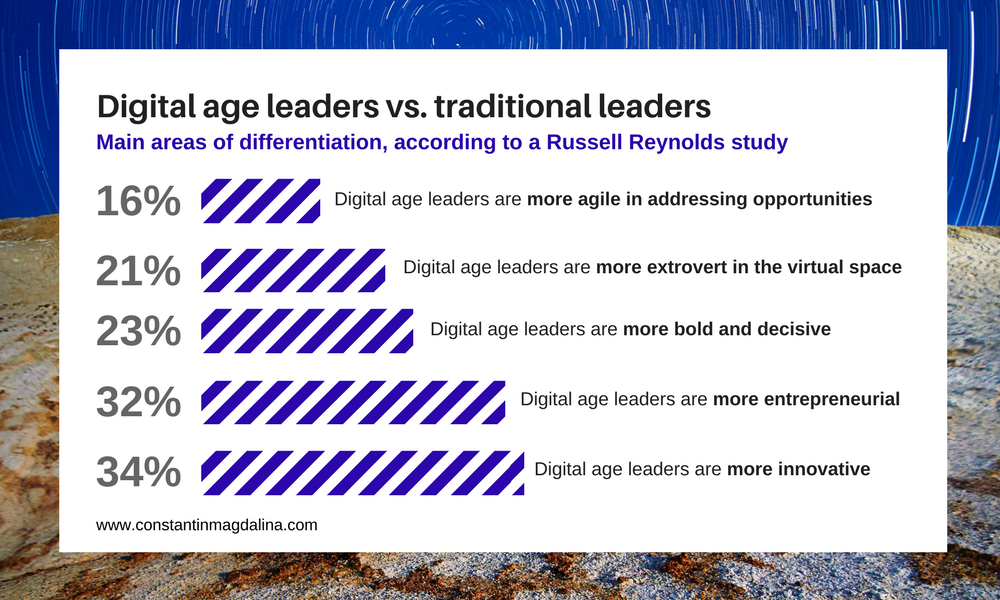Released through technology by the obsolete recipe of professional becoming, the representatives of this generation of digital leaders are increasingly pushing for leadership roles within companies.
Friends with technology, it propels them into middle management positions at the age when their parents finished their studies and waited for a job assignment. However, according to the Barometer of digitalization in Romanian companies, conducted by Valoria company, 69% of companies did not take responsibility for the digital development of a person's business in a leadership position. Is it an opportunity for this new generation?
Nowadays, the changes that remodel the leadership within companies are the following:
1. Technology, 2. The democratization of access to information through the Internet, 3. The transition from the physical work to a knowledge-based one, 4. Forms of companies’ organization increasingly less hierarchical.
In the digital era, the role of the leader is defined by:
1. Leader's contribution to the transition to an organization that makes knowledge the main raw material.
2. An open attitude and ability to understand and anticipate the disruptive impact of the latest technologies in the most diverse areas.
3. Updating his/her knowledge on the advancement of technology and capitalizing on it by drawing the company's direction.
4. Ability to identify the latest trends affecting industries and the entire operating ecosystem of the company whose leadership team is part of, from big data and cloud computing to automation and robotization.
5. Being aware of the limits of his/her own competence and expanding the field of his/her knowledge through consultation with relevant colleagues and experts. Conscious of his/her own limits, the leader opens to the community and forgets the authoritarian leadership model.
These coordinates, according to which leadership is defined in the digital age, may also be diversified. The result of this phenomenon is not only a reshaping of leadership, but also a dismantle of vertical hierarchical models that are replaced by agile horizontal structures between company leaders, project managers, teamwork coordinators, leaders of supplier equipment company.
According to a study by Russell Reynolds, when compared to traditional executives, the digital leaders are 34% more innovative, with 32% more disruptive, 23% more bold in leadership, 21% more social adept, 16% more agile in addressing opportunities business.

The conversion to becoming a leader in the digital age is produced by:
1. Defining clear roles based on the work and not positions held in the organization; the same person can be a manager in a project and a consultant in another.
2. Sharing responsibility at the team level and empowering decentralized decisions.
3. Frequent changes of the organizational structure through fine iterations; each team self-organizes.
4. Transparency of rules, respect for them by everyone, including CEO, and exclusion of political games in the company.
5. Opening new business lines that capitalize on trends and breakthroughs in the industry.
Digital technology will play an increasingly important role in our companies and our lives. The rise of the digital age does not necessarily mean the sunset of leadership in general, but an important reformulation of the one we know. One still needs people with vision, skill magnets, dream projectors and conscious masters. One still needs talent scouts, organizational architects, and programmers of the future. But all these features will not summarize to a leadership job title but will refer to each and each one of us.





























